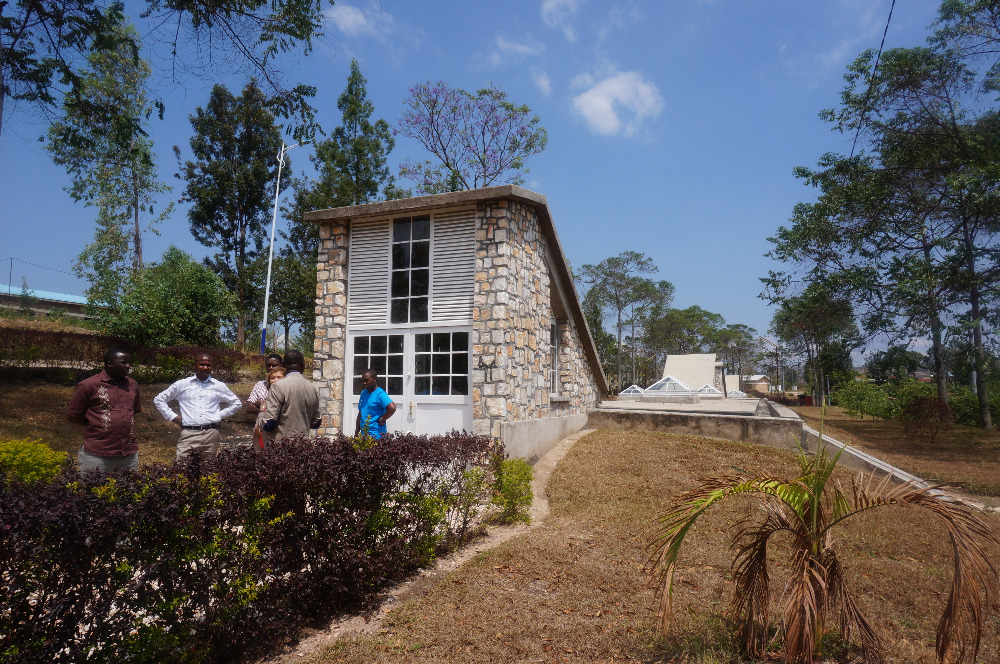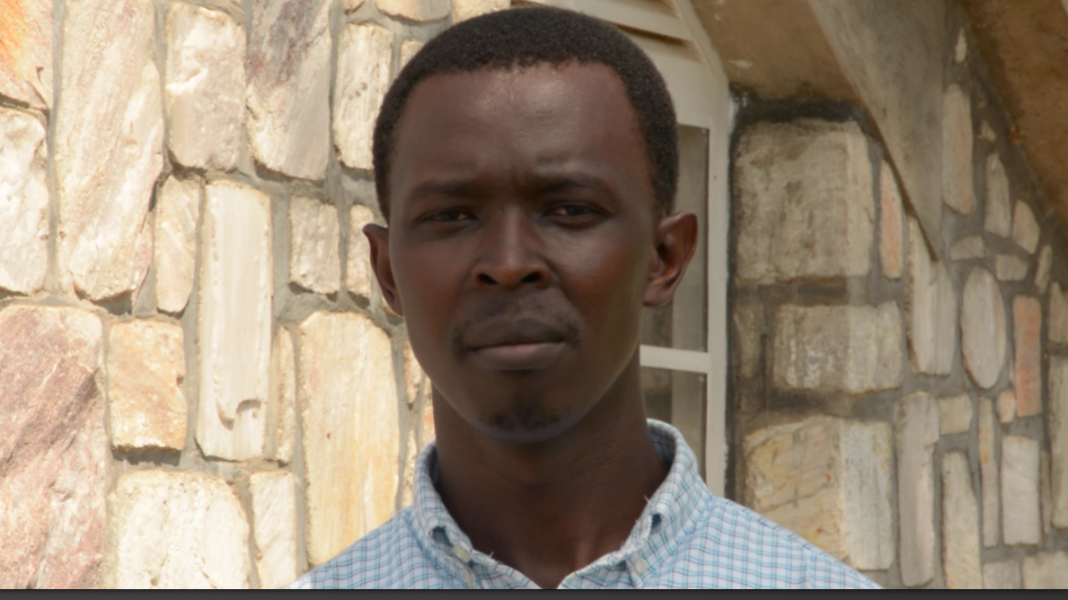
Ease the Pain of Genocide Survivors
Donation protected
I am Patricia Pasick, Ph.D., a psychologist in the US from Ann Arbor, and Director of Stories For Hope Rwanda, a Michigan non-profit.
The 235 survivors of a genocide--the Amayaga Genocide Survivors Foundation-- have created a memorial honoring 62,290 people who were killed over three days in Kinazi and surrounding area during the Rwandan Genocide Against the Tutsi.
They asking for funds to create sheltering gardens of small trees and flowering bushes, pathways, and benches, and walls that list names of those who perished, survived, and were found responsible for the murders.
The funds are needed now, during Rwanda's official mourning period which runs from April through June.


 Fellow humans, how was this possible? In the early weeks of the Rwandan Genocide Against the Tutsi, over 50,000 men, women, and children were told to leave their homes for their own “protection” and gather in a hillside district office in Kinazi.
Fellow humans, how was this possible? In the early weeks of the Rwandan Genocide Against the Tutsi, over 50,000 men, women, and children were told to leave their homes for their own “protection” and gather in a hillside district office in Kinazi.
It was a trick. Government militias in jeeps and roving packs on foot climbed toward them with guns and grenades. The Tutsis fought back with hoes and sticks but over 60,000 were slaughtered in three days, their remains bulldozed into large pits.
How did the few survive? Only by miracles. Some hid under bodies. Seven year-old Jean d’Amour Mutoni and five year-old Marie Claire Niyomujeje ran and hid in the bush and banana trees. Other were rescued by sympathetic Hutu neighbor, or simply ran for their lives.
and five year-old Marie Claire Niyomujeje ran and hid in the bush and banana trees. Other were rescued by sympathetic Hutu neighbor, or simply ran for their lives.
Scroll down to hear Marie Claire's testimony on video (parts of her story contain mentions of violence).

What are the survivors of the Kinazi massacre doing now? Recovering their lives and overcoming pain. Honoring their dead family members. With their own funds they formed a survivors association to find and wash the remains of loved ones, and give them proper burial. The photo below is Denyse Ugiriwabo; she and her brother lost 94 family members.
Those remains lay in a memorial built on the hillside where they died. Two underground vaults, completely accessible from above by visitors, and guarded round the clock, lie under thick concrete and are ringed with plants.
Survivors live throughtout Rwanda but call this place home. Home is where their parents are. Some visit weekly, or monthly.

Samuel Dusengiyumva was 13 years old when the killings hit his village on April 14, 1994 and then he rushed to the District Commune offices in Kinazi looking for protection which never came. His parents and 3 siblings were killed there. Through streams of bullets, grenades, spears and machetes, he fled with his remaining little brother, who was killed at a roadblock. Sam hid among thick sorghum farms for three months until rescue came three months later. In 2014 he found and buried his family at the Kinazi Memorial. He says now:
I wish we did not have to lose all the people. I wish we did not have to build memorials. Fulfilling that ultimate duty gave me strength and courage to move forward in life. It offered me a hope of survival and forging my future.
When I visit the memorial with my wife and children, I feel a sense of relief and composure, like many other survivors. It’s a unique place of restoration and remembrance. We reflect on our past and feel a sense of togetherness with lost souls.
Alexis Rusagara was six years old when his father began moving them to shelter from the killers descending upon his area, near Kinazi.
I could see so many people being shot of bullets, hit by heavy clubs with nails on their heads and dying instantly. I was with both parents and four siblings.
Alexis’s father was killed outside a Catholic Church, and he lost three of his siblings, uncle, and cousins.
I once had a family of parents and siblings, and I loved them. A memorial is another home for most of us. Those who were young during the genocide are faced with tough questions from their children today—that is, who is your father/mother, brother or sister? The memorial is such an opportunity to get some of these critical questions answered.
Robert Muhoza Kayigi, Denyse's brother had this to say about the memorial:
I feel linked with the Kinazi Memorial, my entire family is there. It gives me peace when I visit the site. Each time I think of father or mother I commute down to Kinazi to pay my respect and deeply reflect about all I went through. The memorial brings us together, unites us, and makes us one. It's hope for future.
Wish list: The survivors also want to build walls that display names of the dead, and names of the survivors. For justice, a third wall will list the perpetrators who have been found guilty.
Please help ease the pain of these genocide survivors. Every single dollar helps. Listen to Marie Claire's story, if you have any doubt that you can make a difference.
The 235 survivors of a genocide--the Amayaga Genocide Survivors Foundation-- have created a memorial honoring 62,290 people who were killed over three days in Kinazi and surrounding area during the Rwandan Genocide Against the Tutsi.
They asking for funds to create sheltering gardens of small trees and flowering bushes, pathways, and benches, and walls that list names of those who perished, survived, and were found responsible for the murders.
The funds are needed now, during Rwanda's official mourning period which runs from April through June.


 Fellow humans, how was this possible? In the early weeks of the Rwandan Genocide Against the Tutsi, over 50,000 men, women, and children were told to leave their homes for their own “protection” and gather in a hillside district office in Kinazi.
Fellow humans, how was this possible? In the early weeks of the Rwandan Genocide Against the Tutsi, over 50,000 men, women, and children were told to leave their homes for their own “protection” and gather in a hillside district office in Kinazi. It was a trick. Government militias in jeeps and roving packs on foot climbed toward them with guns and grenades. The Tutsis fought back with hoes and sticks but over 60,000 were slaughtered in three days, their remains bulldozed into large pits.
How did the few survive? Only by miracles. Some hid under bodies. Seven year-old Jean d’Amour Mutoni
 and five year-old Marie Claire Niyomujeje ran and hid in the bush and banana trees. Other were rescued by sympathetic Hutu neighbor, or simply ran for their lives.
and five year-old Marie Claire Niyomujeje ran and hid in the bush and banana trees. Other were rescued by sympathetic Hutu neighbor, or simply ran for their lives. Scroll down to hear Marie Claire's testimony on video (parts of her story contain mentions of violence).

What are the survivors of the Kinazi massacre doing now? Recovering their lives and overcoming pain. Honoring their dead family members. With their own funds they formed a survivors association to find and wash the remains of loved ones, and give them proper burial. The photo below is Denyse Ugiriwabo; she and her brother lost 94 family members.

Those remains lay in a memorial built on the hillside where they died. Two underground vaults, completely accessible from above by visitors, and guarded round the clock, lie under thick concrete and are ringed with plants.
Survivors live throughtout Rwanda but call this place home. Home is where their parents are. Some visit weekly, or monthly.

Samuel Dusengiyumva was 13 years old when the killings hit his village on April 14, 1994 and then he rushed to the District Commune offices in Kinazi looking for protection which never came. His parents and 3 siblings were killed there. Through streams of bullets, grenades, spears and machetes, he fled with his remaining little brother, who was killed at a roadblock. Sam hid among thick sorghum farms for three months until rescue came three months later. In 2014 he found and buried his family at the Kinazi Memorial. He says now:
I wish we did not have to lose all the people. I wish we did not have to build memorials. Fulfilling that ultimate duty gave me strength and courage to move forward in life. It offered me a hope of survival and forging my future.
When I visit the memorial with my wife and children, I feel a sense of relief and composure, like many other survivors. It’s a unique place of restoration and remembrance. We reflect on our past and feel a sense of togetherness with lost souls.
Alexis Rusagara was six years old when his father began moving them to shelter from the killers descending upon his area, near Kinazi.
I could see so many people being shot of bullets, hit by heavy clubs with nails on their heads and dying instantly. I was with both parents and four siblings.
Alexis’s father was killed outside a Catholic Church, and he lost three of his siblings, uncle, and cousins.
I once had a family of parents and siblings, and I loved them. A memorial is another home for most of us. Those who were young during the genocide are faced with tough questions from their children today—that is, who is your father/mother, brother or sister? The memorial is such an opportunity to get some of these critical questions answered.
Robert Muhoza Kayigi, Denyse's brother had this to say about the memorial:
I feel linked with the Kinazi Memorial, my entire family is there. It gives me peace when I visit the site. Each time I think of father or mother I commute down to Kinazi to pay my respect and deeply reflect about all I went through. The memorial brings us together, unites us, and makes us one. It's hope for future.
Wish list: The survivors also want to build walls that display names of the dead, and names of the survivors. For justice, a third wall will list the perpetrators who have been found guilty.
Please help ease the pain of these genocide survivors. Every single dollar helps. Listen to Marie Claire's story, if you have any doubt that you can make a difference.
Organizer
Patricia Pasick
Organizer
Ann Arbor, MI


